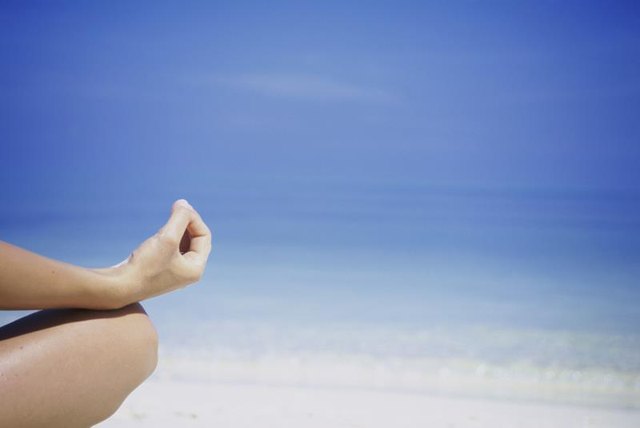Relaxation therapy is a therapeutic approach that teaches the skills of various relaxation techniques, which decrease stress and anxiety, to individuals in different mental states. It is employed in therapeutic settings in addition to an individual’s daily life. According to the MSN's Healthy Living website, one of the great benefits of relaxation therapy is the low-risk of negative consequences.

Close up of a woman's hand as she meditates at the beach. Photo Credit Purestock/Purestock/Getty Images.

Why Use Relaxation?
Stress, something that everyone experiences, can cause much physical and mental strain on the body. When we are stressed, our body is in overdrive, constantly working and protecting. Thus, when people have the ability to employ relaxation techniques, they are able to return their body to a calm, resting state where it can restore itself. The Help Guide reports that “relaxation response brings your system back into balance: deepening your breathing, reducing stress hormones, slowing down your heart rate and blood pressure, and relaxing your muscles.”
How Is it Used?
Relaxation therapy is used by mental health professionals, such as social workers, counselors and psychotherapists, to help their patients deal with stress and anxiety. Relaxation is taught to increase an individual’s ability to deal with issues outside of the therapeutic session. Decreasing stress and returning to a calm state allows people to refocus and accomplish more throughout the day.
Techniques
Various types of relaxation techniques can be learned, but the basis of all these techniques is the return to a calm mental state. It is important to remember to choose the technique that feels most appropriate to the individual. The MSN's Healthy Living website reports the following relaxation techniques: First, visualization is a technique where individuals employ the use of all of their senses in order to take themselves on a guided mental journey full of calming images. A second technique is progressive muscle relaxation. The individual focuses on specific muscle groups, tightening and relaxing them progressively. A third technique is autogenetic relaxation. Focus is placed on a mantra and the awareness of the individual’s body. Other general techniques include mediation, yoga, exercise, massage and hypnosis, among others.
Problems
Although relaxation therapy tends to be a low-risk technique it does have its problems. Relaxation, for some, can become a cause of stress in itself or can trigger the remembrance of previous trauma. According to MSN's Healthy Living, some individuals become stressed by their inability accomplish the relaxation goals. For these people, relaxation therapy should be discontinued and replaced by more appropriate therapeutic techniques. Also, some people may attempt to use relaxation techniques on their own without the supervision of a trained professional and may be avoiding more serious mental health problems.
Overall
Relaxation therapy is a valued technique used to treat various situations of stress and anxiety. Also, it is a low-risk skill set that can be used outside of therapeutic settings to help individuals overcome stressful situations and return to a focused calming state on their own.
www.livestrong.com





No comments:
Post a Comment